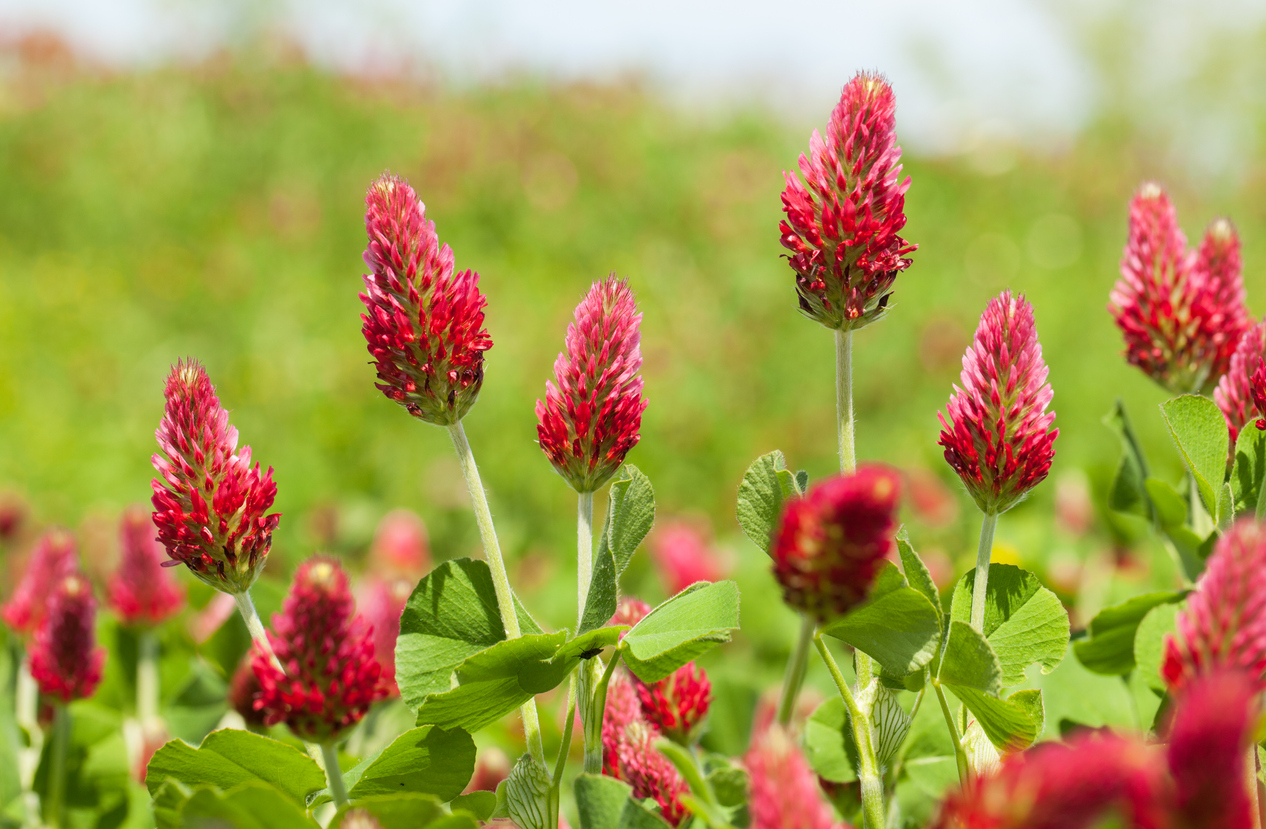For those of you who are like me and aren’t especially fond of weeding, there’s another way to keep them under control: cover crops. And the best cover crops are easy, worry-free, and will nourish your garden soil all in one go.
If you’re wondering how you’ve missed the idea of cover crops, you aren’t alone. It’s somehow been a secret that I think possibly the weed lobbyist were keeping to themselves. Or maybe chiropractors? Because when you spend hours bent over pulling weeds, your back will ache, and your chiropractor will fill up his or her appointment book, all thanks to weeds. That’s probably not true, and I love my chiropractor, but either way, cover crops can help.
Cover crops act similarly to mulch. They shade out weeds and take up many of the nutrients weeds need to thrive. Cover crops also help prevent erosion, and they can get worked into the soil to improve overall soil health.
Some cover crops are perennials and will grow in early spring, beating out weeds before they can get started. And some are quite tasty in their own right, such as oats or fava beans. But which are the best cover crops for your garden?
Discover 10 top tips for growing, harvesting, and enjoying fruits, vegetables, herbs and more from your home garden—when you access the FREEBIE How to Grow a Vegetable Garden, right now!
The 5 best cover crops for home gardens
Let me start by saying that any “best” list is always relative. In part, the best cover crops for your garden depend on what you want to achieve, your climate, and what type of soil you have. So, with that in mind, what are some of the cover crops you might want to grow?
1. Alfalfa: Alfafa isn’t just one of the best cover crops for your garden; it’s also one of the most popular. While alfalfa does need warm temperatures to germinate, this hardy and drought-tolerant plant does it all. It’s entirely edible, and the gorgeous purple flowers brighten up any dish. Alfalfa sprouts are popular in salads, and the plant itself is pretty easy to grow. As far as your garden is concerned, alfalfa is equally popular. Its deep taproot can pull nutrients to the surface that are typically unreachable, and it helps keep the soil loose and fertile.
2. Crimson clover: You can plant crimson clover as a cover crop in the spring or fall, and you’ll have short, bright flowers soon thereafter. If planted in late summer, Crimson clover may go dormant in the winter and continue growing in the spring. The USDA points out that “the flowers produce abundant nectar and pollen” that attracts bees and other beneficial insects.
3. Fava beans: Fava beans, also known as broad beans, are among the oldest cultivated crops and are still popular around the Mediterranean basin. They love cooler weather and can germinate in temperatures as low as 35 degrees Fahrenheit. The plants grow thick and tall, and they’re some of the best nitrogen-fixing legumes around.
4. Oats: Oats will grow quickly and crowd out any weeds thinking about taking space in your garden. Oats also help prevent erosion, and since they die over the winter in colder climates, it’s easy to work into the soil in spring for some additional nutrients.
5. Winter wheat: Winter wheat is one of the best cover crops not only for keeping weeds under control, but also for adding nutrients like nitrogen, phosphorus, and potassium to your soil. One caveat is that, according to the University of Massachusetts Amherst Extension Vegetable Program, winter wheat won’t grow in areas prone to flooding.
Certainly, there are many more cover crops. So why didn’t they make the list? First, I wanted to offer a small variety of plants that are all easy to grow. Then within that, my goal was to provide a mix that included plants that met different purposes, such as pollinator-friendly or, like the Fava beans, delicious as a food crop as well as a cover crop.
Some popular cover crops, like rye, may have allelopathic qualities and inhibit the growth of some of your food crops. Others, like buckwheat, would have made the list, except that they can turn from cover crop to weed if you aren’t careful.
Of course, for additional weed control, you can plant several cover crops together. Crimson clover, for example, can thrive as a lower layer of growth underneath taller plants like fava beans.
Have you used cover crops in your garden? I’d love to know what you’ve found that works or doesn’t work!
Discover 10 top tips for growing, harvesting, and enjoying fruits, vegetables, herbs and more from your home garden—when you access the FREEBIE How to Grow a Vegetable Garden, right now!

One reply on “5 of the Best Cover Crops to Keep Weeds Under Control”
Where/Who is the best place to buy Crimson Clover Seeds? There are many choices.